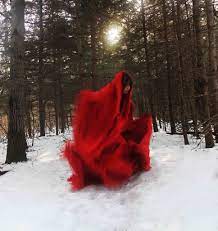It is that time of year again when First Nations and supporters draw together to remember the Murdered and Missing Indigenous Women in Canada as part of the REDress Project.
Algoma-Manitoulin Kapuskasing MP Carol Hughes says the movement started in Colombia and has spread to other countries including Canada and now the United States.
She says since its inception, she was impressed by how the advocates used such a simple object, a red dress, to symbolize loss and grief and the importance of not forgetting the women lost to violence.
Hughes points out it is now being used to amplify the other voices of those who are marginalized including those in the LGBTQ2+ and Indigenous communities.
Hughes adds she will do her part to mark Red Dress Day this Wednesday, May 5th.
The brainchild of visual artist Jamie Black, the REDress Project is rooted in political action that the artist witnessed in Colombia in 2010. That’s when she saw a group of women wearing red dresses and demonstrating over missing family members who have been ‘disappeared’, a consistent feature of that country’s decades-long struggle with armed conflict.
Black recognized the parallel between those Colombian women and the families of Murdered and Missing Indigenous Women (MMIW) in Canada.
This was also at the same time as the Truth and Reconciliation Commission was starting to hold events across the country. The project dovetailed nicely with the spirit of the times and soon grew beyond Black’s installations taking on a life of its own in public spaces and on social media.
Since its inception, I have been more than impressed with the energy and determination attached to the REDress Project. This important and symbolic campaign uses a simple object to convey so many concepts along with strong emotions.
Now, it is also being used to amplify other voices that have been marginalized, specifically two-spirit, lesbian, gay, trans, bisexual, queer, questioning, intersex and asexual individuals who have faced similar discriminatory and violent behaviour.
The project is also transcending borders with red dresses being displayed in this manner in the United States too. The MMIW crisis is similar in that country with Indigenous women being murdered at a rate of ten times the national average.
Given America’s long history, it is incredible to consider that the current administration is the first to include a Native American, Deb Haaland who is serving as Secretary of the Interior. She recently announced the US will set up a special unit to investigate MMIW.
In Canada, we have undertaken a National Inquiry into Murdered and Missing Indigenous Women and Girls which only concluded with its report a few years back in 2019. The legacy of that work can be tied to the work of the Truth and Reconciliation Commission and may represent a real turn in the road for our country. The website for the National Inquiry is a treasure trove of information and includes a Gallery of Artistic Expression which showcases an incredible range of talent and multiple works rooted in loss and the MMIW phenomenon.
While viewing the gallery I was reminded of the work of Espanola resident Christie Belcourt. Already recognized as a talented artist, she is the creator and lead coordinator of Walking With Our Sisters, a 2012 art installation commemorating the MMIW of Canada and the United States. Like Black’s work, this project has toured North America with the help of local activists and continues to inspire action.
By hanging red dresses in public spaces, we can challenge society to come to terms with violence that should never be allowed to define us. In a sense, these dresses are revoking permission from abusers and reclaiming public spaces, one dress at a time.
This is an important step on our journey towards reconciliation, which can’t even begin without understanding.



